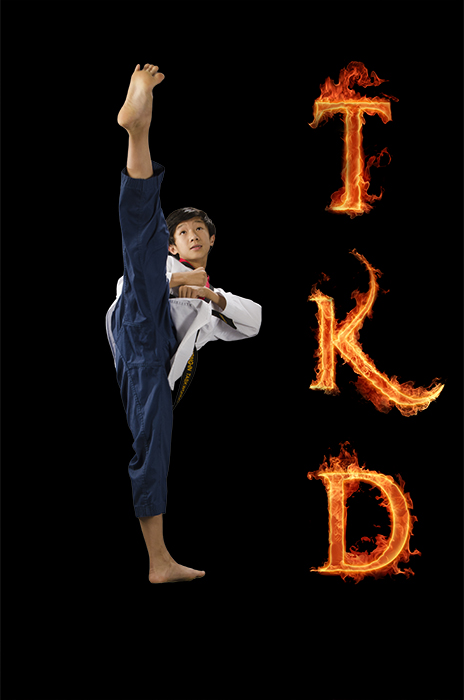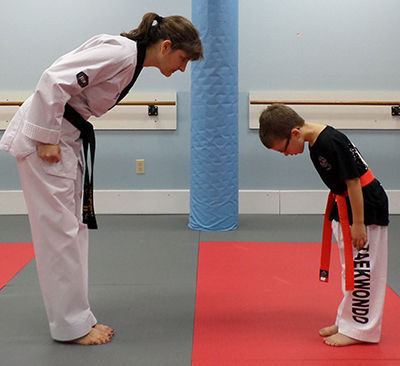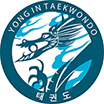
What is Taekwondo?
Taekwondo is action philosophy. It is the Korean art of self-defense. Literally translated, Tae means foot, Kwon means hand, and Do means art. It is much more than the physical image martial arts has. Taekwondo is designed as a nonviolent art and a system of complete body exercise, as well as being a way of life. It includes physical techniques, mental discipline, and a deep philosophy. By practicing Taekwondo, one can benefit in the following ways:
- Physically – One can develop good coordination, gain strength, increase flexibility, and improve cardiovascular conditioning. From all of these physical qualities, one can have a strong body.
- Mentally – One can build self-confidence, gain better judgment, and improve self-control. From all these mental qualities, one can have a sound mind.
- Philosophically – While developing a strong body and a sound mind, it is appropriate to learn the valuable philosophical tools and lessons in life offered by Taekwondo philosophy. Among these lessons:
- The way to be honest, always standing for justice.
- How to respect and help others.
- The meaning of loyalty and courtesy.
Incorporating these three aspects of Taekwondo training into your life will build the ability to be strong, humble, gentle, and maintain self-respect.
Taekwondo philosophy emphasizes good health, happiness, generosity, and a sense of value of freedom, justice, and peace. All of these inspire both independence and coexistence.
Taekwondo is an art for humanity. It is a guide for the foundation of an outstanding character. It is practiced as a modern world sport. It is useful as a contemporary, universal philosophy. Taekwondo is the most practical, the most beautiful, and the greatest martial art in the world.

Bowing and its Purpose
Bowing is a form of body language in Asian countries. A bow can be used to say “hello,” “good bye,” “thank you,” and “you’re welcome.” Bowing is also a way of showing courtesy and acceptance. When two people bow to each other they are showing mutual respect.
Traditionally, Taekwondo students demonstrate respect by bowing when they enter the dojang, to the flags before entering the training area, to the instructor, to senior belts at the beginning and the end of class, and to a partner before and after each interaction. It is a part of Taekwondo to bow whenever and wherever you see each other.
Over time, you will find that bowing has become a natural form of expressing the special relationship you have with your fellow Martial Artist.
